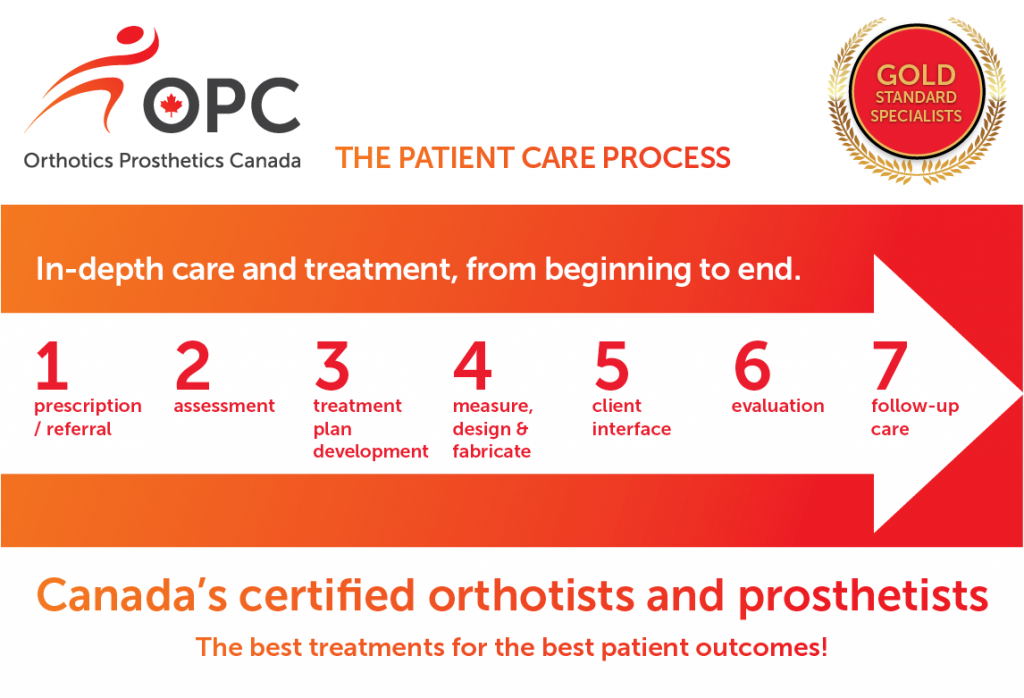Manitoba Orthotics and Prosthetics Association
Patient Care Process

The Gold Standard in quality patient care provides in-depth care and treatment, from beginning to end. This step by step care ensures the patient's overall well-being and improved physical health is the focus. Our experts work with our patients to restore mobility, comfort, safety and provide the devices Canadians need for their independent, daily living.
The Seven Steps Include:
-
Prescription/Referral Form:
Certified Orthotists and Prosthetists require a prescription/referral from an authorized medical professional to provide treatments. A prosthetic referral is generated from an interdisciplinary team that has determined the patient is physically capable and mentally ready to begin prosthetic treatment.
-
Assessment and Patient Evaluation:
A thorough clinical assessment and patient evaluation is completed using standardized tests and analyses and by collecting patient-specific characteristics that will be used to determine the appropriate prosthetic/orthotic treatment.
-
Treatment Planning:
Analyze, evaluate and integrate information gathered in the Patient Assessment & Evaluation. Using this information a prosthetic/orthotic treatment is developed which may include the provision of a new prosthesis/orthosis, improvement of function in current device, or referral to other health care professionals.
-
Measure, Design & Fabrication:
Certified Orthotists and Prosthetists take 3D scans/casts of patients and have the skills and equipment within the clinic to design and manufacture custom made orthoses/prostheses. They can make adjustments and alterations in-house to ensure optimum fit and function.
-
Treatment Implementation and Evaluation:
Using relevant clinical and technical skills, the Certified Practitioner provides the patient with the prosthetic/orthotic treatment that may include the provision of a new prosthesis/orthosis, restoration/improvement of function in current prosthesis/orthosis, or referral to other health care professionals. Fit and function are assessed, and adjustments made in-house if necessary. Education is provided to the patient on use and care.
-
Ongoing Treatment and Re-evaluation:
Review prosthetic/orthotic treatment with patient subsequent to original care. Provide additional treatment to adjust, optimize or restore function of the prosthesis/orthosis, and re-educate patient as necessary. Refer to or consult with other health care professionals, as necessary.
-
Professional Practice:
Practice in accordance with professional standards and legal requirements; participate in personal and professional development through continuing education, training, research, and organizational affiliations; and provide training and education to others.
MOPA is a volunteer run organization comprised of registered and certified P&O professionals in Manitoba.
Contact Us
Copyright © 2026 Manitoba Orthotics and Prosthetics Association. All Rights Reserved.
